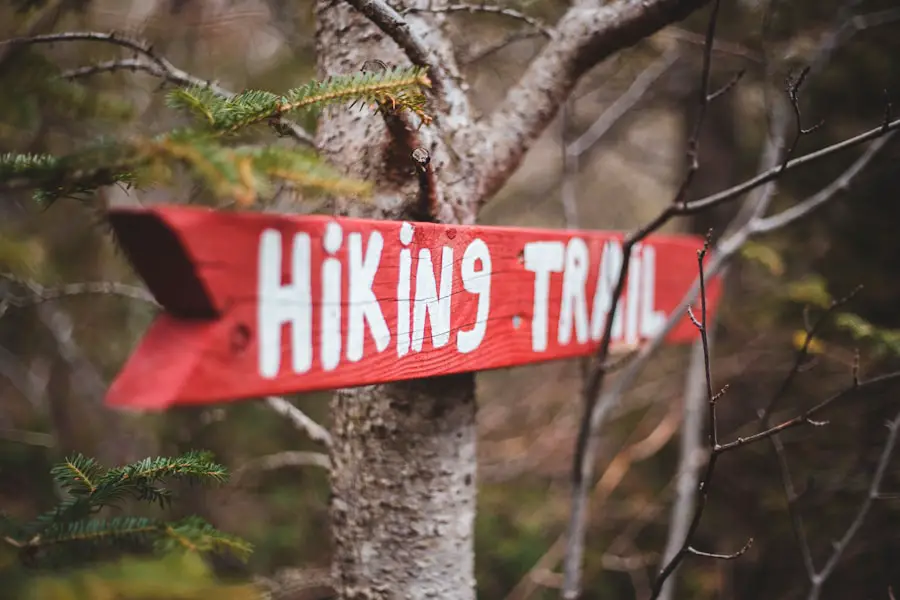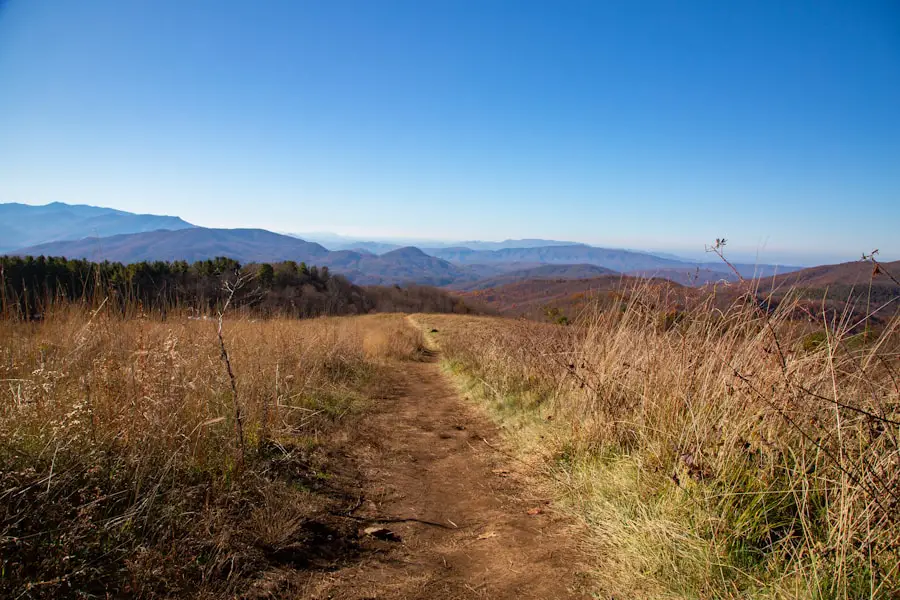The Appalachian Trail (AT) is one of the most iconic long-distance hiking trails in the United States, stretching approximately 2,190 miles from Springer Mountain in Georgia to Mount Katahdin in Maine. This extensive trail traverses a diverse array of landscapes, including lush forests, rugged mountains, and serene valleys, offering hikers a unique opportunity to experience the natural beauty of the eastern United States. The trail passes through 14 states, each contributing its own distinct character and challenges to the overall hiking experience.
The length of the Appalachian Trail can vary slightly depending on the specific route taken and any detours that may be necessary due to weather conditions or trail maintenance. The official length is often updated as trail improvements are made and as new sections are added or rerouted. Hikers should be aware that the trail is not a straight line; it winds through various terrains, which can add to the overall distance covered.
This complexity is part of what makes the AT both a challenging and rewarding endeavor for those who choose to hike it.
Key Takeaways
- The Appalachian Trail is approximately 2,190 miles long, spanning from Georgia to Maine.
- Factors affecting hiking duration include physical fitness, weather conditions, and resupply stops.
- The average time to complete the Appalachian Trail is 5-7 months for thru-hikers.
- The fastest known time record for completing the trail is around 41 days.
- The slowest known time record for completing the trail is around 10 months.
- Beginners are recommended to plan for a hiking duration of 6-8 months to complete the trail.
- When planning your hike duration, consider your physical abilities, resupply points, and potential weather challenges.
- Safety considerations for long-distance hiking include proper gear, physical conditioning, and emergency preparedness.
Factors Affecting Hiking Duration
Physical Fitness Level
The hiker’s physical fitness level is a critical element in how long it takes to complete the Appalachian Trail. Experienced hikers who are accustomed to long-distance trekking may find themselves able to cover more ground each day compared to those who are new to hiking or have less stamina.
Terrain and Weather Conditions
The terrain and weather conditions also play a crucial role in determining hiking duration. Sections of the trail can vary dramatically in difficulty, with steep ascents and descents, rocky paths, and muddy areas that can slow progress. Weather conditions such as rain, snow, or extreme heat can make hiking more challenging and may necessitate taking additional rest days or slowing down to ensure safety.
Seasonal Changes and Personal Pace
Seasonal changes also impact trail conditions; for instance, spring thaws can lead to muddy trails, while autumn may bring early snow in higher elevations. Additionally, hikers must consider their own pace and rest needs, as fatigue can accumulate over long distances, requiring more frequent breaks and recovery time.
Average Time to Complete the Appalachian Trail

The average time it takes to complete the Appalachian Trail varies widely among hikers, but most people take between five to seven months to finish the entire route.
This timeframe allows for a balanced approach that includes hiking, resting, and resupplying along the way. Many hikers begin their journey in the spring, typically around March or April, taking advantage of milder weather and longer daylight hours.This timing also allows them to reach the northern terminus at Mount Katahdin before winter sets in. Hikers often plan their daily mileage based on their experience level and physical condition. A common target for many is to hike around 10 to 15 miles per day during the initial stages of their journey, gradually increasing their daily mileage as they build endurance and become more familiar with the trail’s demands.
However, this average can fluctuate significantly based on individual circumstances, including personal goals, trail conditions, and unforeseen challenges encountered along the way.
Fastest Known Time Records
| Route | Runner | Time |
|---|---|---|
| Appalachian Trail | Karl Meltzer | 45 days, 22 hours, 38 minutes |
| Pacific Crest Trail | Karel Sabbe | 52 days, 8 hours, 25 minutes |
| John Muir Trail | 2 days, 19 hours, 26 minutes |
The quest for speed on the Appalachian Trail has led to remarkable achievements in fast-packing, with several individuals setting records for completing the trail in record time. As of October 2023, the fastest known time (FKT) for a supported hike of the AT is held by Karel Sabbe, who completed the trail in just 41 days, 7 hours, and 39 minutes in 2018. This astonishing feat required not only exceptional physical endurance but also meticulous planning and support from a dedicated crew that provided food and logistical assistance along the way.
Sabbe’s record-breaking hike involved averaging over 53 miles per day, a pace that few can sustain over such an extended period. His achievement highlights not only his physical capabilities but also his strategic approach to tackling the challenges of the trail. Fast hikers often utilize lightweight gear and efficient resupply strategies to minimize downtime and maximize their hiking hours each day.
The allure of setting a new FKT continues to inspire many hikers who seek to push their limits on this legendary trail.
Slowest Known Time Records
While many hikers aim for speed on the Appalachian Trail, others take a more leisurely approach, savoring every moment of their journey. The slowest known time for completing the AT is held by a hiker named “The Turtle,” who took an impressive 2 years, 2 months, and 1 day to finish the trail. This extended timeline reflects a commitment to enjoying the experience rather than racing against time.
Hikers like The Turtle often take breaks for personal reflection, exploration of side trails, or simply enjoying the beauty of nature at a slower pace. This slower approach can be particularly appealing for those who wish to immerse themselves in the local culture and communities along the trail. Many hikers take time to volunteer in towns they pass through or engage with fellow hikers at shelters and campsites.
The slower pace allows for deeper connections with nature and fellow adventurers, creating lasting memories that go beyond just completing the hike. Such experiences highlight that hiking the Appalachian Trail is not solely about reaching the destination but also about embracing the journey itself.
Recommended Hiking Duration for Beginners

Duration and Acclimatization
For beginners, it’s essential to plan a hike that allows for gradual acclimatization to long-distance hiking. A recommended timeframe for novice hikers is approximately six months if they intend to complete the entire trail. This duration provides ample opportunity to build endurance while also allowing for rest days and time spent enjoying various attractions along the way.
Starting with Shorter Sections
New hikers should start with shorter sections of the trail before committing to longer stretches. This approach helps them gauge their physical capabilities and understand what gear works best for them. Many beginners opt for section hikes—completing specific segments of the trail over weekends or vacations—before attempting a full thru-hike.
Building Confidence and Essential Skills
This method not only builds confidence but also allows them to learn essential skills such as navigation, campsite selection, and weather preparedness without feeling overwhelmed by the enormity of the entire trail.
Tips for Planning Your Hike Duration
When planning a hike on the Appalachian Trail, several strategies can help ensure that your duration aligns with your goals and abilities. First and foremost, it is essential to create a flexible itinerary that accounts for varying daily mileage based on terrain and personal fitness levels. Utilizing resources such as guidebooks or online forums can provide valuable insights into specific sections of the trail, helping you anticipate challenges and plan accordingly.
Incorporating rest days into your schedule is equally important; these breaks allow for recovery and exploration of nearby towns or attractions. Many hikers find that taking a day off every week or so helps maintain their physical and mental well-being throughout their journey. Additionally, keeping an eye on weather forecasts can aid in planning; being prepared for inclement weather may require adjusting your daily mileage or rescheduling rest days.
Safety Considerations for Long-Distance Hiking
Safety is paramount when embarking on a long-distance hike like the Appalachian Trail. Hikers should be well-prepared for various scenarios that could arise during their journey. One critical aspect of safety is understanding how to navigate potential hazards such as wildlife encounters, changing weather conditions, and difficult terrain.
Carrying bear spray in areas known for bear activity and learning how to store food properly can mitigate risks associated with wildlife. Moreover, having a solid understanding of first aid is essential for addressing minor injuries or illnesses that may occur on the trail. Carrying a well-stocked first aid kit and knowing how to use its contents can make a significant difference in emergency situations.
Additionally, maintaining communication with friends or family members about your itinerary can provide an extra layer of safety; sharing your plans ensures that someone will know your expected location should anything go awry. In conclusion, hiking the Appalachian Trail is an adventure filled with challenges and rewards that vary greatly depending on individual circumstances and choices made along the way. Understanding its length, factors affecting hiking duration, average completion times, records set by others, and safety considerations are all crucial elements in preparing for this remarkable journey through some of America’s most beautiful landscapes.
If you are planning a long hike like the Appalachian Trail, it’s important to consider how you will keep your phone charged while on the trail. One helpful article to check out is Best Carry-On Suitcase with USB Charger or the Best Travel Scooter for easy transportation during your adventures.
Love travel? Join Our Facebook Community
FAQs
What is the average time it takes to hike the entire Appalachian Trail?
The average time it takes to hike the entire Appalachian Trail is 5 to 7 months.
What factors can affect the duration of a hike on the Appalachian Trail?
Factors that can affect the duration of a hike on the Appalachian Trail include the hiker’s physical fitness, experience, weather conditions, and the number of rest days taken.
What is the fastest known time for hiking the entire Appalachian Trail?
The fastest known time for hiking the entire Appalachian Trail is 41 days, 7 hours, and 39 minutes, achieved by Karel Sabbe in 2018.
What is the slowest known time for hiking the entire Appalachian Trail?
The slowest known time for hiking the entire Appalachian Trail is 372 days, achieved by David “AWOL” Miller in 2011.
What is the recommended pace for hiking the Appalachian Trail?
The recommended pace for hiking the Appalachian Trail is to cover an average of 10 to 15 miles per day, with rest days included in the schedule.
